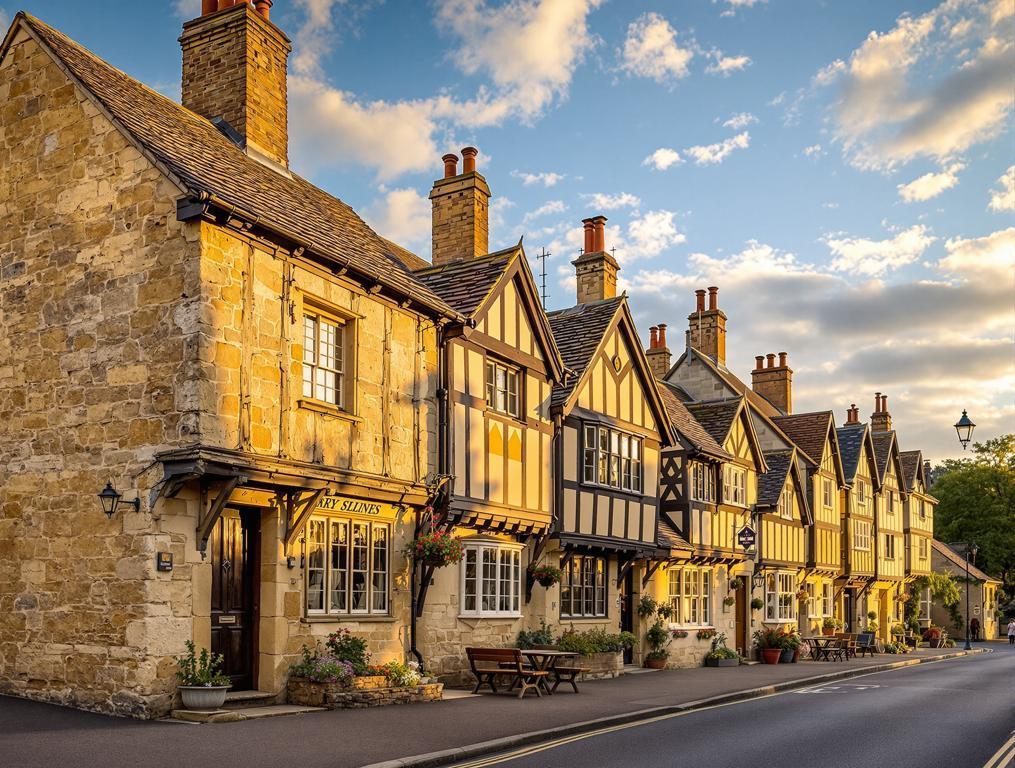I’m standing on platform 1 at Charlbury Station, admiring the Grade II-listed Brunel architecture as my train from London pulls away. Just 90 minutes ago, I was in the bustle of Paddington Station. Now, I’m in a Cotswolds market town where time moves differently. The morning mist is lifting over the Evenlode Valley, revealing honey-colored stone buildings that have witnessed centuries of quiet history. With fewer than 3,000 residents yet over half its central buildings dating back to the 1500s, Charlbury holds an astonishing architectural density that’s remarkably easy to access.
The town where history outweighs population 50 to 1
Walking down Church Street, I’m immediately struck by how over 50% of Charlbury’s central buildings date from Elizabethan to Victorian times. This isn’t a museum—it’s a living community where centuries-old homes serve as everyday residences.
“We don’t make a fuss about our buildings like some places do,” a shopkeeper tells me as I admire Armada Cottage, dating from 1555. “They’re just our homes.”
This unfussy authenticity is Charlbury’s most charming quality. While some Cotswolds towns feel like film sets, Charlbury remains genuinely inhabited. The Bull Inn has served travelers since the 1700s, Gothic House stands proudly with its Victorian arches, and the Old Talbot Inn whispers tales of travelers past.
Charlbury’s Quaker history adds another layer of character. Unlike the literary refuge of Sanary-sur-Mer in France, Charlbury’s cultural heritage centers around religious nonconformity. The town became a glove-making center in the 18th century, with Quaker families establishing a craft that would sustain the community for generations.
The Cotswolds town that avoids the tourist spotlight
Just 13 miles from Oxford and 6 miles from Chipping Norton, Charlbury somehow remains untroubled by the tour buses that clog nearby Bourton-on-the-Water. While its neighbors have embraced mass tourism, Charlbury seems content in its quiet authenticity.
“We’ve watched other villages become overwhelmed with visitors. Here, you can still find the real Cotswolds without fighting through crowds taking selfies.”
The architectural preservation here rivals Wallace, Idaho’s historic district, yet Charlbury wears its heritage lightly. The community-owned Good Food Shop on Sheep Street exemplifies this unpretentious approach—a deli, bakery, and health food store operated by locals for locals.
What makes Charlbury particularly special is how it balances preservation with accessibility. Unlike remote historic villages, it offers direct trains to London and Oxford, making it possible to step from modern urban life into centuries-old England in under two hours.
Every summer, this quiet town demonstrates its surprising cultural duality when the Wilderness Festival brings music and arts to nearby Cornbury Park. Like Philipsburg, Montana, Charlbury has mastered hosting thousands of visitors while maintaining its authentic character.
What the guidebooks won’t tell you
The best way to experience Charlbury is by arriving mid-week when the station coffee shop is open but the weekend day-trippers are absent. From the station, walk 10 minutes uphill to the town center, passing Brunel’s engineering masterpiece as you go.
For walkers, Charlbury offers exceptional access to the Oxfordshire Way, with summer wildflowers currently in bloom. The 5-mile circular route to Stonesfield provides breathtaking valley views without the crowds found on better-known Cotswold paths.
Don’t miss the Beer Festival in late July, when local breweries showcase their ales in the Cricket Club grounds. This event remains primarily local—you won’t find it in most tourist calendars.
For accommodation, bypass the obvious choices and look for Church Street B&Bs in historic buildings, where overnight stays start at £85. The Bull Inn offers more upscale rooms with 400-year-old oak beams overhead.
As I sip tea at the Rose & Crown, watching locals chat about the upcoming Wilderness Festival, I realize Charlbury has achieved something remarkable. In an era when pretty villages become Instagram backdrops, it has maintained its soul—what locals might call “keeping your boots muddy while your mind stays sharp.” Sarah would love photographing these timeless streets, especially in this golden afternoon light. Some places make you feel like a visitor; others like Charlbury make you feel like you’ve found your way home.
